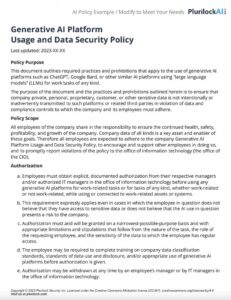The Art of Deception: A Deep Dive into Social Engineering in Cybersecurity
Introduction
In the world of cybersecurity, the term “social engineering” carries significant weight. It’s not just a buzzword; it’s a critical threat vector that can compromise even the most robust security systems. Social engineering attacks rely on human psychology rather than technical vulnerabilities, making them a formidable challenge for organizations and individuals alike. In this deep dive, we’ll explore what social engineering is, why it matters, and delve into its importance by examining real-world examples and the evolving tactics employed by malicious actors.
What is Social Engineering?
At its core, social engineering is a technique used by attackers to manipulate individuals into revealing confidential information, performing actions that compromise security, or granting unauthorized access to systems and data. Unlike traditional cyberattacks that exploit technical vulnerabilities, social engineering attacks exploit the human element of cybersecurity, relying on psychological manipulation and deception.
Key Concepts in Social Engineering
- Pretexting: This involves creating a fabricated scenario or pretext to trick individuals into divulging sensitive information. For example, an attacker might pose as an IT support technician and call an employee, claiming to need their password for a system upgrade.
- Phishing: Phishing is one of the most common forms of social engineering. It typically involves sending deceptive emails or messages that appear legitimate, prompting recipients to click on malicious links, download malware, or provide personal information.
- Baiting: Baiting attacks lure victims with the promise of something desirable, such as free software or media downloads. Once the bait is taken, malware is delivered, compromising the victim’s device.
- Tailgating: This physical social engineering tactic involves an attacker following a legitimate employee into a secure area without authorization, often posing as a colleague or contractor.
- Quid Pro Quo: Attackers offer something in return for sensitive information or access. For example, they might pretend to be a researcher conducting a survey and offer a gift card in exchange for login credentials.
- Impersonation: In impersonation attacks, attackers pretend to be someone the victim knows and trusts, such as a coworker or superior. This can be done via email, phone, or in person.
Why Social Engineering Matters
Social engineering matters profoundly in the realm of cybersecurity for several reasons:
Human Element:
Human beings are often the weakest link in the cybersecurity chain. Despite sophisticated technical defenses, humans can be tricked, manipulated, or coerced into actions that jeopardize security. Attackers recognize this vulnerability and exploit it to gain access to systems and data.
Bypassing Technical Defenses:
Even the most advanced security technologies can be circumvented through social engineering. Firewalls, antivirus software, and intrusion detection systems are powerless against a user willingly providing their credentials or clicking on a malicious link.
Target Diversity:
Social engineering attacks are versatile and can target a wide range of individuals, from employees in an organization to individuals in their personal lives. This versatility makes them a preferred choice for attackers.
Cost-Effective:
From an attacker’s perspective, social engineering is cost-effective. It requires minimal technical expertise or resources compared to developing sophisticated malware or exploiting complex vulnerabilities.
Psychological Manipulation:
Social engineering leverages psychological manipulation techniques, making it difficult for individuals to recognize they are being deceived. Attackers often exploit emotions such as fear, curiosity, or trust to achieve their goals.
The Importance of Social Engineering in Cybersecurity
To emphasize the importance of social engineering in cybersecurity, let’s analyze a few real-world examples and explore the evolving tactics used by malicious actors.
Real-World Examples
Example 1: The Target Data Breach
In 2013, one of the largest retail breaches in history occurred at Target, affecting 40 million credit and debit card accounts. Attackers gained access to Target’s point-of-sale systems by compromising a third-party HVAC vendor’s credentials. This attack highlighted the effectiveness of spear-phishing and pretexting.
The attackers first sent spear-phishing emails to the vendor, posing as a trusted source. Once they gained access to the vendor’s system, they used it to infiltrate Target’s network. This breach cost Target hundreds of millions of dollars in fines, lawsuits, and damage to its reputation.
Example 2: The Twitter Bitcoin Scam
In July 2020, a major Twitter hack occurred, compromising the accounts of high-profile individuals and companies, including Barack Obama, Elon Musk, and Apple. The attackers used a combination of social engineering tactics, including impersonation and pretexting.
They posed as legitimate account holders and posted tweets asking for Bitcoin donations, promising to double the amount sent. This scam netted the attackers over $100,000 in cryptocurrency in a matter of hours, highlighting the rapid financial impact that social engineering attacks can have.
Evolving Tactics
Social engineering tactics continue to evolve, making them even more challenging to defend against. Some of the key trends in social engineering include:
Enhanced Phishing Campaigns:
Phishing attacks have become increasingly sophisticated, with attackers using highly convincing email templates and cloned websites. They also leverage current events, such as global crises or news events, to create urgency and fear.
Advanced Impersonation:
Attackers now use deepfake technology to create convincing audio and video recordings of individuals, making impersonation attacks even more difficult to detect.
Psychological Profiling:
Attackers gather extensive information about their targets from social media and other online sources to craft highly personalized and convincing social engineering attacks.
Blurring Physical and Digital:
Some attacks combine physical and digital social engineering. For example, an attacker may send a phishing email to an employee, then follow up with a phone call, claiming to be from the IT department to provide further assistance.
Insider Threats:
Social engineering attacks often exploit insiders who have authorized access to sensitive systems and data. Insiders may be coerced or manipulated into carrying out malicious actions.
The Human Firewall: Defense Against Social Engineering
Given the persistent and evolving nature of social engineering attacks, organizations must invest in educating and training their employees to become a “human firewall.” This involves:
- Security Awareness Training: Regular training sessions that teach employees to recognize and respond to social engineering threats, such as phishing simulations and awareness campaigns.
- Multi-Factor Authentication (MFA): Enabling MFA for all sensitive accounts and systems adds an additional layer of security, even if credentials are compromised.
- Access Controls: Implement strict access controls to limit the information and systems accessible to employees, reducing the potential impact of insider threats.
- Incident Response Plans: Develop comprehensive incident response plans that include protocols for handling social engineering incidents. Employees should know whom to contact and what steps to take.
- Continuous Monitoring: Employ advanced threat detection systems that can identify suspicious behavior and potential social engineering attempts.
- User Vigilance: Encourage employees to remain vigilant and skeptical of unsolicited requests for information or actions. Verify the identity of anyone requesting sensitive information or access.
Conclusion
Social engineering remains a potent and ever-evolving threat in the realm of cybersecurity. Its importance cannot be overstated, as it targets the human element, which is often the weakest link in an organization’s defense. Real-world examples like the Target data breach and the Twitter Bitcoin scam illustrate the financial and reputational damage that social engineering attacks can inflict.
As attackers continue to refine their tactics and leverage advanced technologies, the need for robust defenses and a security-aware workforce becomes paramount. Organizations must invest in educating and training their employees to recognize and respond to social engineering threats. By doing so, they can build a stronger human firewall, helping to protect against the deceptive and manipulative tactics of cyber adversaries in an increasingly interconnected world.














